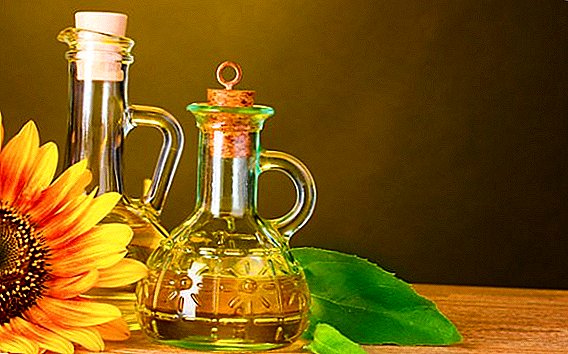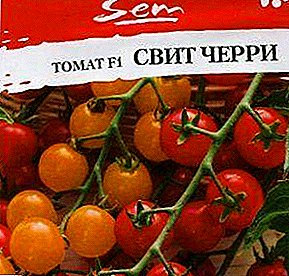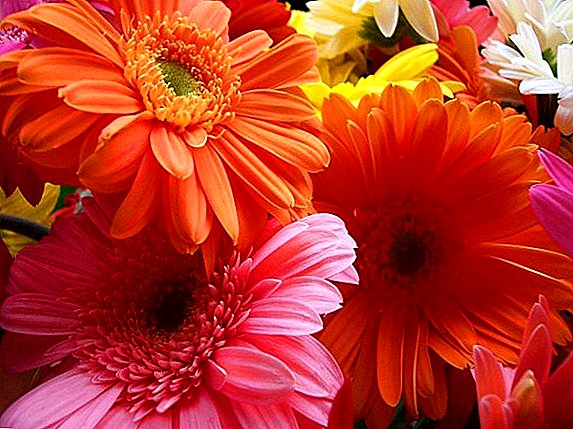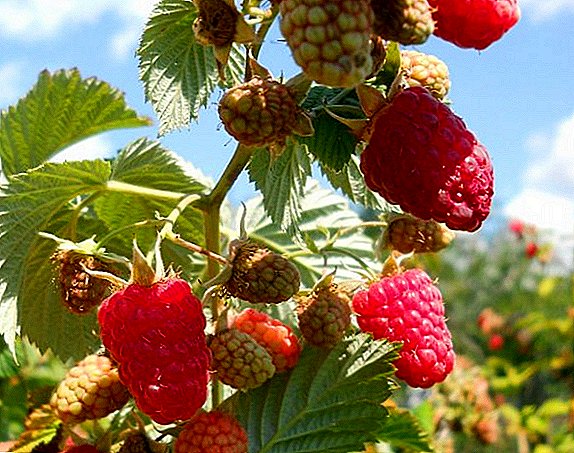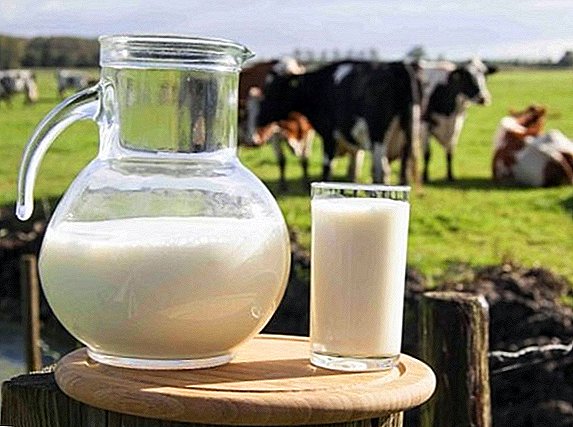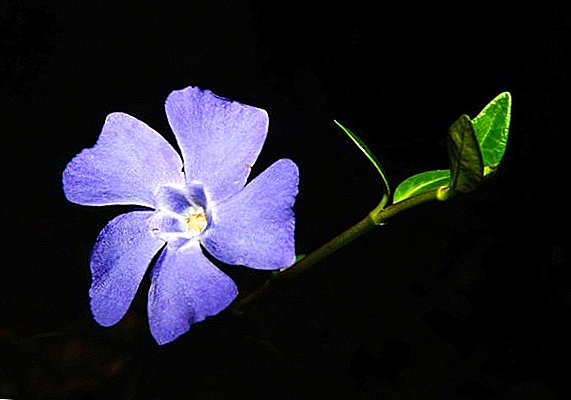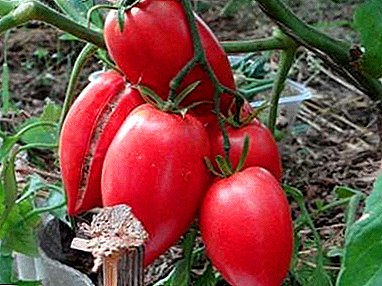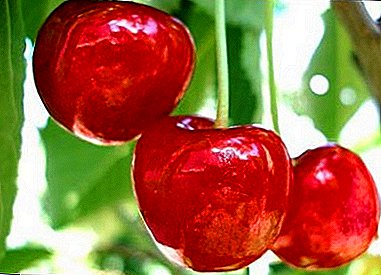
Receive from your own garden gorgeous cherriesYes, in large quantities and every year, and so that the plant is not at all afraid of the strong Russian frosts - such is the dream of almost every national gardener.
But there are no ideal varieties or almost none. Most often, the most productive option is to choose for the active development of a variety that would best suit a particular region of the country.
Cherry Ural Ruby - one of the best for a particular region. Description of the variety and photo of the fruit - further in the article.
Breeding history and region of breeding
 The name of this cherry species itself reflects exactly in which region of the country it mainly grows.
The name of this cherry species itself reflects exactly in which region of the country it mainly grows.
At the same time, the “geographical” factor of the name of a variety also indicates the place of its “origin”.
For many years, the Ural breeders specializing in cherries have sought to create varieties that would unpretentious in relation to the conditions of existencewould be short stature, bushythat in a snowy climate is of particular importance, resisted the cold wellinherent to the specified region, and gave a decent harvest.
Breeding cherries with such parameters in the 1950s took the famous Ural breeder N.Gvozdyukovawho worked in those years on Sverdlovsk Experimental Station Gardening Ural Research Institute of Agricultureco-authored with S.Zhukovrepresenting Central Genetic Laboratory. I.V. Michurin.
They feel good in similar climatic conditions of the Ashinskaya and Tsarevna and Vladimirskaya varieties.
A representative of the Tambov breeding institution provided saplings of one of the Michurin varieties as a basis for the future of the "ruby" variety (today their origin is unknown).
On the part of the Urals people for crossing was proposed to sow seeds of a local steppe variety Ideal.
 As a result, a variety was obtained that was zoned and introduced in 1959 in the State Varietal Register by Ural, Vyatka and West Siberian regions of Russia.
As a result, a variety was obtained that was zoned and introduced in 1959 in the State Varietal Register by Ural, Vyatka and West Siberian regions of Russia.
Currently, the Ural Ruby is most popular in Chelyabinsk, Perm and Sverdlovsk regions.
Appearance of cherry Ural Ryabinovaya
Each cherry has its own characteristics, different from other cherry varieties. In the Ural Ruby they are as follows:
Tree
In fact, is a fruit small bush.
The average tree height of this variety is within 1.5 m, very rarely reaches marks 1.8-2 m.
Crown, branches. Despite its small stature, the Ural Ruby cherry variety has a fairly wide crown. The crown forms a spherical silhouette.
In addition, it is characterized by medium thickening. Formed into a single whole by sprawling, distinctly drooping branches.
Shoots. Annual growths as well as bouquet branches are fruitful.
Leaves. Have a distinct shine. Shirokolantsetny leathery leaves in shape very much resemble a boat.
Fruit
 Outwardly very attractive cherries of the Ural Ruby variety are round shaped fruits average with a slight flattening in the area of the suture and stalk.
Outwardly very attractive cherries of the Ural Ruby variety are round shaped fruits average with a slight flattening in the area of the suture and stalk.
The diameter of the usual ripe berries ranges from 15 to 17 mm. Fruit weighs an average of 3.5-4 ghowever, copies are periodically recorded up to 5 The predominant skin color is dark red (ruby). The same color or slightly lighter shade is the flesh of the fruit.
Varieties Vyanok, Dessert Morozova and Volochaevka also possess sufficiently large fruits.
In addition, the pulp has good juiciness and medium density. Ripe berries exhibit high resistance to cracking. Inside the fetus is medium bone which is very easily separated from the cherry flesh. The fruit is securely held on the branches with the help of not very long stalks.
A photo


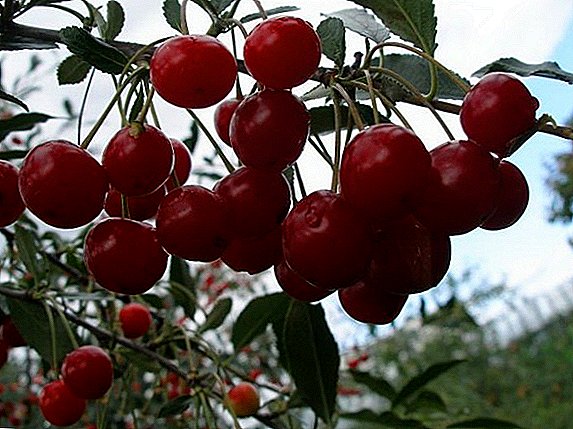


Characteristic variety
This cherry refers to self-infertile varieties - The most common category of type of fertilization plants.
This means that the specific structure of the flowers does not allow the cherry to develop by self-fertilizing its own pollen. Without additional external pollinators, the tree will bloom quite nicely in spring, but there will be no harvest.
Therefore, planting such a cherry as the Ural Ruby in the garden, it is necessary to take care of planting next to it several cherry trees of other, self-fruited, varieties.
The best pollinators in the case of the Ural Ruby are varieties: Lighthouse, Zagrebinskaya, Vole, Asterisk, Alatyrskaya, Generous.
 However, the described variety itself is an excellent pollinator. For many years, it has been actively used for the selection of new promising varieties of cherries.
However, the described variety itself is an excellent pollinator. For many years, it has been actively used for the selection of new promising varieties of cherries.
A very important factor for the cool and changeable climate of the Ural region is winter hardiness of the plant, especially its wood and buds.
Such varieties as Volochaevka, Chokoladnitsa and Lebedyanskaya show excellent winter hardiness.
Small and very unpretentious trees are excellent take root in adverse conditions. There is considerable evidence that this fruit crop tolerates cold even below 30 - 35 ° C.
As a result of purposeful breeding, it was possible to grow a variety that “protects” its crop not only due to its general frost resistance, but also due to flowering time.
The most important biological feature for a gardener is that flowers on its branches appear in late spring.
They have practically no “overlap” with the particularly insidious spring frosts in time, so they are not afraid of “off-season” weather fluctuations.
Flowering variety Ural Ruby occurs, as a rule, from May 30 to June 7-8.
All fruits on the tree ripen at the same time in the second half of the last summer month. But normal fruiting begins. not earlier than the third year after planting the seedling.
 This cherry is characterized by a fairly high yield. Traditionally 6-7 kg of fruits are obtained from one small shrub tree.
This cherry is characterized by a fairly high yield. Traditionally 6-7 kg of fruits are obtained from one small shrub tree.
However, in some cases, at experimental stations, especially in central Russia, harvests up to 14-15 kg from one tree.
It should also be noted that maximum yields are obtained from individuals of the Ural Rubin at the age of 13-16 years.
The general term of viability of this grade is estimated 24-30 years.
Also high-yield varieties include cherries: Turgenevka, Chernokorka, Black Large and Shubinka.
The cherry in question has a dual purpose - table and technical. However, many consumers perceive the sweet and sour taste of its fruit as rather mediocre, and since they are relatively it is not enough sugar (8,4-9,6%) and it is a lot of acid (1,5-1,9%), fresh, these berries are consumed much less frequently than as raw materials for the preparation of quite tasty and original juices, compotes, and jam.
To technical grades belong Podbelskaya and Turgenevka.
Planting and care
In order for the tree to develop normally in the future, not to hurt and give good yields, you should take care of the optimal choice of the landing site in advance.
The seedling will take root well in the area where there is a lot of sunlight and where constant airing is guaranteed.
 It is vital for a young tree to be in a place where there is no stagnation of groundwaterclose to the surface of the earth.
It is vital for a young tree to be in a place where there is no stagnation of groundwaterclose to the surface of the earth.
As for the structure and chemical composition of the soil at the planting point, they should be light, quite loose, and preferably loamy.
All these moments are of fundamental importance, since, most likely, it is in this place that the cherry that does not tolerate transplants will have to spend its whole life.
The Ural Rubin cherry variety is planted either in spring, before bud break, or in autumn, no later than mid-October. Experienced Gardeners recommend spring planting, since after autumn the inferior sapling can freeze, happen early frosts.
Usually bushy individuals are planted at intervals no less than 2 m between each other. The landing hole is dug in size 50 cm in diameter and 50 cm in depth. In any case, the roots of the plant should fit in the hole.
A peg is driven into the hole, to which a sapling will be attached. Pre-cleaned from damage and roots soaked for 3 hours gently lowered into the hole and covered with earth. The soil is rammed so that there are no voids left in it.
 Around the trunk trees form a radial ground roller with a diameter of 50-60 cmwhich will prevent the spreading of water. Watering the seedling not cold distilled water (2-3 buckets).
Around the trunk trees form a radial ground roller with a diameter of 50-60 cmwhich will prevent the spreading of water. Watering the seedling not cold distilled water (2-3 buckets).
With proper planting, the root neck of the plant after watering and sinking the ground should be at ground level.
You can fix the error plowing or digging out extra soil (if the neck was recessed).
At the end of planting the foot of the sapling Sprinkle with mulch in the form of sawdust or compost.
Caring for cherries of this variety is practically the same as caring for other varieties. He assumes regular irrigation, soil loosening, pruning of dead and too long branches, periodic soil fertilization at the roots.
Potash and phosphate fertilizers are applied in the fall, when digging is carried out. Organic fertilizers (manure, compost) are applied at least once every 3 years. In the spring, directly under the trunk of the plant, nitrogenous fertilizers are added.
Diseases and pests
The Ural Rubin variety is highly resistant to cherry mucous sawfly and cherry aphid.
Ural Ruby Cherry can suffer from such a dangerous fungal disease as coccomycosis.
Moreover, the degree of plant resistance depends on climatic conditions and geography of distribution - as it grows further south, the resistance to this malady is higher.
 On the infection of plants with fungal spores Sassomusés hiemaliswhich is the causative agent coccomycosis, usually there are brown spots on the foliage, as well as sudden sudden shedding of it long before the deadline.
On the infection of plants with fungal spores Sassomusés hiemaliswhich is the causative agent coccomycosis, usually there are brown spots on the foliage, as well as sudden sudden shedding of it long before the deadline.
The last factor is very dangerous for a tree, as a bare plant, deprived of the possibility of normal nutrition, quickly weakens and dies after some time.
To prevent this, the tree must be treated. This is done with the help of fungicides. They process the tree three times a season - before, during and after (after 2-3 weeks) flowering.
Among varieties resistant to coccomycosis, one should pay attention to the varieties Pamyati Enikeeva, Novella, Nadezhda and Kharitonovskaya.
Hardened in difficult climatic conditions, the Ural Ruby will add freshness to any table with its beautiful appearance and sweet-sour taste.


